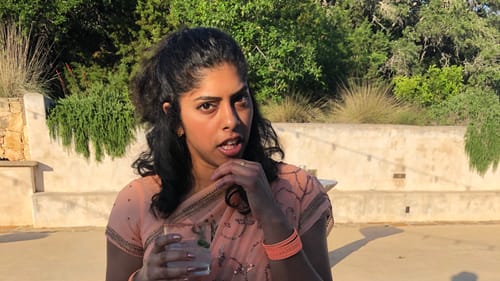Stay in the Loop
BSR publishes on a weekly schedule, with an email newsletter every Wednesday and Thursday morning. There’s no paywall, and subscribing is always free.
Growing up in Bollywood
Three Bollywood movies shaped who I am today—and they’re ready to stream

When I was growing up, my family would rent a new Bollywood movie from our local Indian grocery store/video-rental jawn every Friday night. Besides Lakers games, it was one of the few times a week we’d willingly gather in the same room. In a household with only one TV—without cable—this ritual became a highlight of my week. Three films especially shaped my identity: Dilwale Dulhania Le Jayenge, Kuch Kuch Hota Hai, and Kabhi Khushi Kabhie Gham.
The first is streaming on Amazon Prime, the latter two are available to watch on Netflix.
My happy place
With almost zero representation of Indian Americans onscreen, I turned to Bollywood films to feel seen, understood, and valued. Being targeted in school daily for being Indian, I found the portrayal of cool, smart, beautiful, kind, and funny Indians instrumental in maintaining a sense of confidence in my culture and individuality.
My family would visit India about every four years, and it was my happy place. I loved being surrounded by cousins, my favorite food, and the sweltering Indian heat. Serving as lifelines to my ancestral culture, Bollywood films and soundtracks momentarily supply the same warm feeling in my heart that I have when my feet rest in Indian soil.
Kajol and Shah Rukh Khan
I began to watch Bollywood films around the same time one of Bollywood’s most iconic romantic pairings was born: the actors Shah Rukh Khan (SRK) and Kajol. Now Indian royalty, their 1995 smash hit Dilwale Dulhania Le Jayenge (DDLJ) skyrocketed them into Bollywood stardom.
Aditya Chopra’s directorial debut, DDLJ is about the love story of Raj and Simran, two non-resident Indians who meet on a Euro trip with friends. Their love is forbidden because Simran’s father has already arranged her marriage to another. Raj travels to India in a guise to win over Simran’s family and give their love a fighting chance.
I, along with billions of Indians worldwide, instantly fell in love with the on-screen couple and what would become the longest-running film in Indian cinema history. SRK and Kajol have natural chemistry and the stellar screenplay, also by Chopra, tugs at your heart from all angles.

My parents had an arranged marriage. Growing up, I would see my mother read a different romance novel every week. I used to think it was cheesy, but as an adult I’ve come to understand its significance. My mother never got to have her own love story. I always cry heavily watching this film, the tears symbolizing my freedom, the freedom that was taken from women in my lineage, and for all the sacrifices women are forced to make that lead them down a path they wouldn’t choose for themselves.
Fifteen times
SRK and Kajol reunite for a more modernized love story with Kuch Kuch Hota Hai. Written and directed by Karan Johar, this 1998 hit is about a college love triangle between free-spirited, athletic Anjali (Kajol), charismatic heartthrob Rahul (SRK), and stunning, reserved Tina (Rani Mukherjee). The film’s pacing is extremely gratifying, with SRK and Kajol’s evolving shorthand working wonders for their storytelling capabilities.
I grew up with Kajol as my number-one leading lady. Watching this film for the first time at nine years old, I found many similarities between her character Anjali and myself. She was less concerned with her looks and more interested in beating the boys in basketball. After rewatching the film about 15 times over the years, I realize I may have unconsciously modeled my personality after her. Anjali is a rare three-dimensional female film character, exuding the conviction, generosity, and grace that I’m still chasing.
Parental portrayals
Kabhi Khushi Kabhie Gham (KKKG) is the 2001 follow-up film by Johar, once again starring SRK and Kajol. This time the film does not revolve around a love story, but instead focuses on themes of pride, ego, social class, and clashes between traditional and modern Indians.
Rahul (SRK) is adopted by an affluent businessman and groomed to be his heir, but after falling in love with Anjali (Kajol), a rambunctious woman of a lower class, Rahul is disowned from the family. Ten years later, Rahul’s younger brother attempts to cure his mother’s broken heart and initiate a peaceful reunion between father and son.

KKKG arrives at a point in the early 2000s when Bollywood films made a concerted effort to be more westernized. Despite some cringeworthy moments, the film is one of the most accurate portrayals I’ve seen of how some Indian parents often believe they know what’s best for their children, even at the expense of their child’s own free will.
An optimistic finish
The intrinsic need to please your parents can be destructive to your individuality and future. As a child of Indian immigrants, I’m aware of how many parents believe obedience equals love and respect. I desperately needed to see Indian parents being vulnerable and emotional. Depicting the consequences of pride and stubbornness, KKKG gave me the words that I may never hear from my own parents, both healing me and giving me the strength and courage to rebel against cultural norms while standing up for my own thoughts, feelings, and desires. Abandoning the eternal quest for my parents’ approval led to great strides in owning who I am instead of living my life for them—a battle that many children of immigrants have faced and continue to face.
These three films are pioneering works of art that have defined Indian cinema. Most Bollywood films have happy endings, and although they can be construed as unrealistic, I choose to see them as optimistic. It is therapeutic for me to see a world, even a fantasy world, where India’s patriarchy can be broken, love triumphs, and future generations of Indians have the freedom to choose their own future.
Sign up for our newsletter
All of the week's new articles, all in one place. Sign up for the free weekly BSR newsletters, and don't miss a conversation.

 Christina Anthony
Christina Anthony